Title search results
Showing 1 - 20 of 906 items
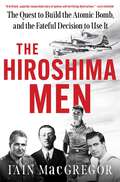
The Hiroshima Men: The Quest to Build the Atomic Bomb, and the Fateful Decision to Use It
By Iain MacGregor. 2025
An epic, riveting history based on new interviews and research that elucidates the approval, construction, and fateful decision to drop…
the atomic bomb on Hiroshima.At 8:15 a.m. on August 6, 1945, the Japanese port city of Hiroshima was struck by the world&’s first atomic bomb. Built in the US by the top-secret Manhattan Project and delivered by a B-29 Superfortress, a revolutionary long-range bomber, the weapon destroyed large swaths of the city, instantly killing tens of thousands. The world would never be the same. The Hiroshima Men&’s vivid narrative recounts the decade-long journey toward this first atomic attack. It charts the race for the bomb during World War II, as the Allies fought the Axis powers, and is told through several key characters: General Leslie Groves, leader of the Manhattan Project alongside Robert Oppenheimer; pioneering Army Air Force pilot Colonel Paul Tibbets Jr.; the mayor of Hiroshima, Senkichi Awaya, who would die alongside eighty thousand fellow citizens; and Pulitzer Prize–winning writer John Hersey, who traveled to Japan for the New Yorker to expose the devastation the bomb inflicted on the city and to describe in unflinching detail the dangers posed by radiation poisoning. This thrilling account takes the reader from the corridors of power in the White House and the Pentagon to the test sites of New Mexico; from the air war above Germany to the Potsdam Conference of Truman, Churchill, and Stalin; from the savage reconquest of the Pacific to the deadly firebombing air raids across Japan. The Hiroshima Men also includes Japanese perspectives—a vital aspect often missing from Western narratives—to complete Iain MacGregor&’s nuanced, deeply human account of the bombing&’s meaning and aftermath.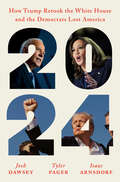
2024: How Trump Retook the White House and the Democrats Lost America
By Isaac Arnsdorf, Josh Dawsey, Tyler Pager. 2025
In 2024, award-winning reporters Josh Dawsey, Tyler Pager, and Isaac Arnsdorf bring us the definitive, inside story of the most…
tumultuous and consequential presidential campaign in our history."An immersive and philosophical tour of an election whose outcome, [the authors] argue, was anything but inevitable.&” —The New York Times&“The whole world was against me, and I won,&” said Donald Trump in an exclusive interview, ten days before his second inauguration. Nearly four years after Trump&’s first turbulent presidency concluded in a violent attempt to overturn the election, he made a political comeback on a scale that stunned the nation. How did the first U.S. president to become a convicted felon regain control of the White House? And at what cost? 2024 is the explosive account of how Trump and his advisers overcame a dozen primary challengers, four indictments, two assassination attempts, and his own past mistakes to defeat the Democrats, and pave the way for a second term that would be far more aggressive and ruthless than the first.Drawing on extraordinary access to the Trump, Biden, and Harris teams, 2024 takes readers beyond the speeches, rallies, and debates to reveal the innermost workings of the Republican and Democratic presidential campaigns. Beginning in August 2022 with the FBI&’s search of Mar-a-Lago for classified documents, and Trump&’s subsequent decision to run once again for president, Dawsey, Pager, and Arnsdorf chart how Trump stifled the rise of Republican opponents, including Ron DeSantis, and how his campaign, led by Susie Wiles, landed on a winning strategy. They reveal in unrivaled detail how Joe Biden and his team brushed off concerns about his age, ignored polling numbers, and held off the next generation of eager Democratic hopefuls—even as Biden was dealing with his own special counsel investigation and the trial of his son Hunter. After his disastrous debate performance forced him to withdraw, Biden anointed Vice President Kamala Harris as the candidate and tasked her with running the shortest presidential campaign in modern U.S. history. With only 107 days to distinguish herself from the past four years, Harris lacked the time or space to outrun Biden&’s shadow—a challenge in and of itself, but one which Biden would make even more difficult. On November 5th, 2024, Trump was elected the nation&’s forty-seventh president, and would return to power vindicated, emboldened, unrestrained, and burning for revenge.Gripping, revelatory, and deeply reported, 2024 is the shocking inside story of the election that tested American democracy and would go on to shape the future of the free world.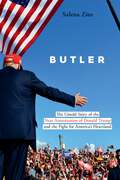
"Salena Zito…. She understands you people and me better than we do.&” -- President Donald J. Trump&“You're going to learn…
things in this book. Beautifully written. Story after story after story." -- Mark LevinFrom the acclaimed journalist standing only a few feet away from the stage when the gunshots began is this gripping first-hand account of the near assassination of Donald Trump – and the inside story of Trump&’s heartland-fueled victory. That day in Butler, had the wind gusted less, had Trump&’s head turned in a slightly different direction, or had the adrenaline-fueled heart of the shooter beat slower, America would have been plunged into chaos, possibly even civil war. As a local reporter with deep ties to the area, Salena Zito had been invited by the president to interview him at the Butler Farm Show Grounds. She was standing only four feet away from the presidential podium when the bullets started to fly. A campaign staffer tackled her to the ground. Throughout it all, Salena never stopped reporting. She spoke by phone to Trump several times in the immediate aftermath and was granted access to community members, rally participants, family members and local law enforcement officials. &“I rarely look away from the crowd,&” Trump told her in one of several of those conversations. &“Had I not done that in that moment, well, we would not be talking today, would we?&” Known for her on-the-ground reporting on populism and rural America, Salena zooms out to tell the fascinating story of the battle for America&’s heartland and the issues that actually motivate voters. To understand how and why Trump won the 2024 election, you have to understand places like Butler. Big cities like Los Angeles, New York and D.C. don&’t decide who wins election cycles, but people in places like Butler, Pennsylvania sure do. President Trump gave the author extraordinary access for this book, including to his top aides, to his running mate JD Vance, to billionaire supporter Elon Musk, and even his security detail. There are moments that define America. The late afternoon hours of July 13, 2024 was one of them. This book is a narrative of that fateful day, the people of the heartland and the untold story of how the president found his way back into the heart of the electorate.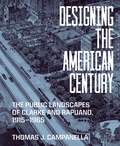
Designing the American Century: The Public Landscapes of Clarke and Rapuano, 1915–1965
By Thomas J. Campanella. 2025
A richly illustrated look at the lives and collaborations of two unsung giants of American landscape and urban designGilmore D.…
Clarke and Michael Rapuano were the foremost spatial designers of the American century. Their vast portfolio of public landscapes propelled the legacy of Frederick Law Olmsted and Calvert Vaux into the motor age, touching the lives of millions and changing the face of the nation. Designing the American Century recovers the forgotten legacy of Clarke and Rapuano, whose parks and parkways, highways and housing estates helped modernize—for better or worse—the American metropolis.With the patronage of public-works titan Robert Moses, Clarke and Rapuano transformed New York over a span of fifty years, revitalizing the city&’s immense park system but also planning expressways, public housing, and urban renewal projects that laid waste to entire sections of the city. In this groundbreaking work, Thomas J. Campanella describes how Clarke and Rapuano helped create some of the metropolitan region&’s most iconic landscapes, from the Central Park Zoo and Conservatory Garden to the Henry Hudson Parkway and Riverside Park, Jones Beach, the Palisades and Taconic State Parkways, and the Brooklyn Heights Promenade. He shows how they left their mark far beyond Gotham as well, with projects as diverse as Yellowstone&’s Mammoth Hot Springs, the Mount Vernon Memorial Highway, site plans for the Pentagon and CIA headquarters, and Montreal&’s Olympic Park.Richly illustrated with a wealth of previously unpublished drawings, plans, and photographs, Designing the American Century fills one of the last major gaps in the history of American urbanism.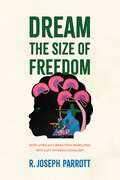
How anti-colonial movements in Angola, Mozambique, and Guinea-Bissau reshaped US activist engagement with the Global South from the 1960s through…
the 1970sDream the Size of Freedom explores how anti-colonial movements in Angola, Mozambique, and Guinea-Bissau reshaped US activist engagement with the Global South from the 1960s through the 1970s and influenced American foreign policy as the Vietnam War drew to a close. These Portuguese African liberation movements, led by nationalists like Eduardo Mondlane and Amílcar Cabral, built global solidarity networks to support their military and social challenges to empire while defending against Western intervention. US activists disillusioned with the Cold War came to see African self-determination as central to global campaigns for racial and economic justice. A broad coalition ranging from Black Power radicals to religious liberals mobilized against the North Atlantic alliance with Portugal. In the process, this grassroots movement helped define a New Left Internationalism that championed decentralized, multiracial organizing and a collaborative vision of US foreign policy to redress historic inequalities between Global North and South.Drawing on more than fifty oral histories and research in government and activist archives on three continents in English, Portuguese, French, and Afrikaans, R. Joseph Parrott reconstructs the transnational anti-imperial network that injected Global South priorities into US political debates. Popular protests and informational campaigns led to collaborations with legislators eager to constrain the powerful executive branch. In 1976, this grassroots-legislative alliance halted Gerald Ford’s anti-communist intervention against the Soviet-backed government of newly independent Angola. This victory of New Left Internationalist ideas anticipated future anti-apartheid and Latin American peace movements while also fueling a conservative revival of Cold War containment. By exploring US engagement with the contested process of African decolonization, Dream the Size of Freedom highlights the origins of two contrasting visions of American foreign policy that defined debates over the country’s proper role in the Global South into the 1990s.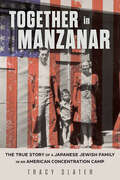
On a late March morning in the spring of 1942, Elaine Yoneda awoke to a series of terrible choices: between…
her family and freedom, her country and conscience, and her son and daughter. She was the child of Russian Jewish immigrants and the wife of a Japanese American man. On this war-torn morning, she was also a mother desperate to keep her young mixed-race son from being sent to a US concentration camp. Manzanar, near Death Valley, was one of ten detention centers where our government would eventually imprison every person of Japanese descent along the West Coast—alien and citizen, old and young, healthy and sick—or, in the words of one official, anyone with even "one drop" of Japanese blood. Elaine's husband Karl was already in Manzanar, but he planned to enlist as soon as the US Army would take him. The Yonedas were prominent labor and antifascist activists, and Karl was committed to fighting for what they had long cherished: equality, freedom, and democracy. Yet when Karl went to war, their son Tommy, three years old and chronically ill, would be left alone in Manzanar—unless Elaine convinced the US government to imprison her as well. The consequences of Elaine's choice did not end there: if she somehow found a way to force herself behind barbed wire with her husband and son, she would leave behind her white daughter from a previous marriage. Together in Manzanar tells the story of these painful choices and conflicting loyalties, the upheaval and violence that followed, and the Yonedas' quest to survive with their children's lives intact and their family safe and whole.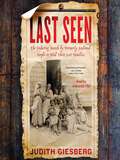
Last seen: The enduring search by formerly enslaved people to find their lost families
By Judith Giesberg. 2025
Drawing from an archive of nearly five thousand letters and advertisements, the riveting, "heartbreaking, and essential" (Jill Lepore, author of…
These Truths ) story of formerly enslaved people who spent years searching for family members stolen away during slavery. Of all the many horrors of slavery, the cruelest was the separation of families in slave auctions. Spouses and siblings were sold away from one other. Young children were separated from their mothers. Fathers were sent down river and never saw their families again. As soon as slavery ended in 1865, family members began to search for one another, in some cases persisting until as late as the 1920s. They took out "information wanted" advertisements in newspapers and sent letters to the editor. Pastors in churches across the country read these advertisements from the pulpit, expanding the search to those who had never learned to read or who did not have access to newspapers. These documents demonstrate that even as most white Americans—and even some younger Black Americans, too—wanted to put slavery in the past, many former slaves, members of the "Freedom Generation," continued for years, and even decades, to search for one another. These letters and advertisements are testaments to formerly enslaved people's enduring love for the families they lost in slavery, yet they spent many years buried in the storage of local historical societies or on microfilm reels that time forgot. Judith Giesberg draws on the archive that she founded—containing almost five thousand letters and advertisements placed by members of the Freedom Generation—to compile these stories in a narrative form for the first time. Her in-depth research turned up additional information about the writers, their families, and their enslavers. With this critical context, she recounts the moving stories of the people who placed the advertisements, the loved ones they tried to find, and the outcome of their quests to reunite. This story underscores the cruelest horror of slavery—the forced breakup of families—and the resilience and determination of the formerly enslaved. Thoughtful, heart-wrenching, and illuminating, Last Seen finally gives this lesser-known aspect of slavery the attention it deserves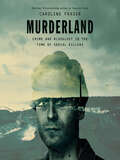
Murderland: Crime and bloodlust in the time of serial killers
By Caroline Fraser. 2025
“A provocative and page-turning work of true crime.” — Publishers Weekly (starred review) “A provocative, eerily lyrical study of the…
heyday of American serial killers . . . A true-crime story written with compassion, fury, and scientific sense.” — Kirkus (starred review) Named a Most Anticipated Book of 2025 by LitHub From the Pulitzer Prize–winning author of Prairie Fires comes a terrifying true-crime history of serial killers in the Pacific Northwest and beyond—a gripping investigation of how a new strain of psychopath emerged out of a toxic landscape of deadly industrial violence Caroline Fraser grew up in the shadow of Ted Bundy, the most notorious serial murderer of women in American history, surrounded by his hunting grounds and mountain body dumps, in the brooding landscape of the Pacific Northwest. But in the 1970s and ’80s, Bundy was just one perpetrator amid an uncanny explosion of serial rape and murder across the region. Why so many? Why so weirdly and nightmarishly gruesome? Why the senseless rise and then sudden fall of an epidemic of serial killing? As Murderland indelibly maps the lives and careers of Bundy and his infamous peers in mayhem—the Green River Killer, the I-5 Killer, the Night Stalker, the Hillside Strangler, even Charles Manson—Fraser’s Northwestern death trip begins to uncover a deeper mystery and an overlapping pattern of environmental destruction. At ground zero in Ted Bundy’s Tacoma stood one of the most poisonous lead, copper, and arsenic smelters in the world, but it was hardly unique in the West. As Fraser’s investigation inexorably proceeds, evidence mounts that the plumes of these smelters not only sickened and blighted millions of lives but also warped young minds, including some who grew up to become serial killers. A propulsive nonfiction thriller, Murderland transcends true-crime voyeurism and noir mythology, taking readers on a profound quest into the dark heart of the real American berserk. Slag Forming Peninsula, American Smelting and Refining Company (ASARCO) Records (Collection 2.4.1) Northwest Room at Tacoma Public Library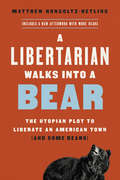
A Libertarian Walks Into a Bear: The Utopian Plot to Liberate an American Town (And Some Bears)
By Matthew Hongoltz-Hetling. 2020
"Simultaneously hilarious, poignant, and deeply unsettling." ―The New RepublicA tiny American town's plans for radical self-government overlooked one hairy detail: no…
one told the bears. Once upon a time, a group of libertarians got together and hatched the Free Town Project, a plan to take over an American town and completely eliminate its government. In 2004, they set their sights on Grafton, NH, a barely populated settlement with one paved road. When they descended on Grafton, public funding for pretty much everything shrank: the fire department, the library, the schoolhouse. State and federal laws became meek suggestions, scarcely heard in the town's thick wilderness. The anything-goes atmosphere soon caught the attention of Grafton's neighbors: the bears. Freedom-loving citizens ignored hunting laws and regulations on food disposal. They built a tent city in an effort to get off the grid. The bears smelled food and opportunity.A Libertarian Walks Into a Bear is the sometimes funny, sometimes terrifying tale of what happens when a government disappears into the woods. Complete with gunplay, adventure, and backstabbing politicians, this is the ultimate story of a quintessential American experiment -- to live free or die, perhaps from a bear.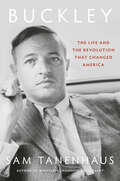
Buckley: The Life and the Revolution That Changed America
By Sam Tanenhaus. 2025
&“A magnificent achievement—a long, gripping, and enthralling account of the life of America&’s premier conservative polemicist of the twentieth century.&”—Max…
Boot, author of Reagan: His Life and Legend&“A rich, immersive biography exposes the roots of the modern conservative movement through the life of the firebrand writer and commentator who shaped it.&”—The New York Times Book Review (Editors&’ Choice)In 1951, with the publication of God and Man at Yale, a scathing attack on his alma mater, twenty-five-year-old William F. Buckley, Jr., seized the public stage—and commanded it for the next half century as he led a new generation of conservative activists and ideologues to the peak of political power and cultural influence.Ten years before his death in 2008, Buckley chose prize-winning biographer Sam Tanenhaus to tell the full, uncensored story of his life and times, granting him extensive interviews and exclusive access to his most private papers. Thus began a deep investigation into the vast and often hidden universe of Bill Buckley and the modern conservative revolution.Buckley vividly captures its subject in all his facets and phases: founding editor of National Review, the twentieth century&’s most influential political journal; syndicated columnist, Emmy-winning TV debater, and bestselling spy novelist; ally of Joseph McCarthy and Barry Goldwater; mentor to Ronald Reagan; game-changing candidate for mayor of New York.Tanenhaus also has uncovered the darker trail of Bill Buckley&’s secret exploits, including CIA missions in Latin America, dark collusions with Watergate felon Howard Hunt, and Buckley&’s struggle in his last years to hold together a movement coming apart over the AIDS epidemic, culture wars, and the invasion of Iraq—even as his own media empire was unraveling.At a crucial moment in American history, Buckley offers a gripping and powerfully relevant story about the birth of modern politics and those who shaped it.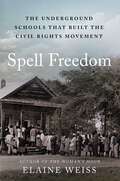
Spell Freedom: The Underground Schools That Built the Civil Rights Movement
By Elaine Weiss. 2025
The acclaimed author of the &“stirring, definitive, and engrossing&” (NPR) The Woman&’s Hour returns with the story of four activists…
whose audacious plan to restore voting rights to Black Americans laid the groundwork for the Civil Rights Movement. In the summer of 1954, educator Septima Clark and small businessman Esau Jenkins travelled to rural Tennessee&’s Highlander Folk School, an interracial training center for social change founded by Myles Horton, a white southerner with roots in the labor movement. There, the trio united behind a shared mission: preparing Black southerners to pass the daunting Jim Crow era voter registration literacy tests that were designed to disenfranchise them. Together with beautician-turned-teacher Bernice Robinson, they launched the underground Citizenship Schools project, which began with a single makeshift classroom hidden in the back of a rural grocery store. By the time the Voting Rights Act was signed into law in 1965, the secretive undertaking had established more than nine hundred citizenship schools across the South, preparing tens of thousands of Black citizens to read and write, demand their rights—and vote. Simultaneously, it nurtured a generation of activists—many of them women—trained in community organizing, political citizenship, and tactics of resistance and struggle who became the grassroots foundation of the Civil Rights Movement. Dr. King called Septima Clark, &“Mother of the Movement.&” In the vein of Hidden Figures and Devil in the Grove, Spell Freedom is both a riveting, crucially important lens onto our past, and a deeply moving story for our present.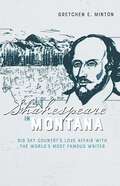
Shakespeare in Montana: Big Sky Country's Love Affair with the World's Most Famous Writer
By Gretchen E. Minton. 2020
Tracing more than two centuries of history, Shakespeare in Montana uncovers a vast array of different voices that capture the…
state&’s love affair with the world&’s most famous writer. From mountain men, pioneers, and itinerant acting companies in mining camps to women&’s clubs at the turn of the twentieth century and the contemporary popularity of Shakespeare in the Parks throughout Montana, the book chronicles the stories of residents across this incredible western state who have been attracted to the words and works of Shakespeare. Minton explores this unique relationship found in the Treasure State and provides considerable insight into the myriad places and times in which Shakespeare&’s words have been heard and discussed. By revealing what Shakespeare has meant to the people of Montana, Minton offers us a better understanding of the state&’s citizens and history while providing a key perspective on Shakespeare&’s enduring global influence.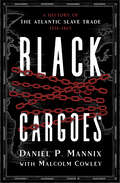
Black Cargoes: A History of the Atlantic Slave Trade 1518–1865
By Daniel P. Mannix, Malcolm Cowley. 1900
&“A carefully understated but chilling account of the whole 3 ½ centuries during which 15 million Africans were snatched from…
their homes and delivered into slavery in the New World.&” —Time In 1518, the Atlantic slave trade began with the landing in the West Indies of the first enslaved people directly from Africa. These were the victims of a forced migration that was more callous and immensely larger, in the end, than any other such movement of modern or ancient times. Written in 1962, Black Cargoes attempts to tell where these exploited people came from, how they were enslaved in Africa, how they were purchased by sea captains, how they were packed into the hold like merchandise (although with greater losses in transit), and how the survivors were sold in West Indian and American markets. Author Daniel P. Mannix brings the horrifying spectacle to life, devoting attention to the engrossing and often fatal adventures of sea captains, smugglers, African agents, and sailors. But he never wavers from delivering &“a clear and frightening record of man&’s ability to allow the lust for money to deaden his sensibilities&” (The Journal of African American History). &“Both fascinating and horrifying. . . . It embodies the most careful research, and it also possesses literary charm.&” —Allan Nevins, Pulitzer Prize–winning author &“A sound book on a rich subject . . . it is the long-needed single volume covering all the salient angles of the evil, old trade.&” —The New York Times Book Review &“It translates the slave trade from statistics and conclusions into the sum total of individual human experiences.&” —Los Angeles Times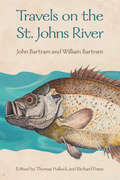
Travels on the St. Johns River
By William Bartram, John Bartram. 2016
A selection of writings from naturalists John and William Bartram, who explored Florida in 1765In 1765 father and son naturalists…
John and William Bartram explored the St. Johns River Valley in Florida, a newly designated British territory and subtropical wonderland. They collected specimens and recorded extensive observations of the region’s plants, animals, geography, ecology, and Native cultures. The chronicle of their adventures provided the world with an intimate look at La Florida.Travels on the St. Johns River includes writings from the Bartrams' journey in a flat-bottomed boat from St. Augustine to the river's swampy headwaters near Lake Loughman, just west of today’s Cape Canaveral. Vivid entries from John's Diary detail the settlement locations of Indigenous people and what vegetation overtook the river's slow current. Excerpts from William's narrative, written a decade later when he tried to make a home in East Florida, contemplate the environment and the river that would come to be regarded as the liquid heart of his celebrated Travels. A selection of personal letters reveal John's misgivings about his son's decision to become a planter in a pine barren with little shelter, but they also speak to William's belated sense of accomplishment for traveling past his father's footsteps.Editors Thomas Hallock and Richard Franz provide valuable commentary and a modern record of the flora and fauna the Bartrams encountered. Taken together, the firsthand accounts and editorial notes help us see the land through the explorers' eyes and witness the many environmental changes the centuries have wrought.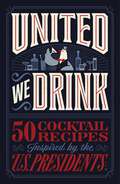
United We Drink: 50 Cocktail Recipes Inspired by the US Presidents
By Harper Celebrate. 2024
Drink like a true American this election season with fun and creative presidential-themed cocktails! Whether you like a more conservative…
pour or are liberal with your libations, let's embrace the pursuit of happiness.It's election season, and if you're anything like most Americans, you like your ballots with a side of booze and your suffrage accompanied by something tall and stiff. In United We Drink, you're invited to celebrate the nation one presidential-themed cocktail at a time.Whether your political views come "with a twist" or are a little more "old-fashioned," this book has you covered. Inside this must-have bartender handbook you'll find:45 easy cocktail and mocktail recipes inspired by each of the presidents5 themed drinks for Republicans, Democrats, and Independents, with guided cutting lines so you can cut out whatever doesn't suit youInspirational, artfully designed quotes from Founding Fathers and former presidents Some of the all-American, presidentially-themed cocktails featured in United We Drink include:Cherry Nelson (inspired by George Washington)Massachusetts Mimosa (inspired by John Adams)Apple Rosemary Gin and Tonic (inspired by Abraham Lincoln)Irish Hot Chocolate (inspired by Chester A. Arthur)Hot Teddy (inspired by Theodore Roosevelt)Mezcal Margarita inspired by (Dwight D. Eisenhower)Frozen Strawberry Jackuiri (inspired by John F. Kennedy)Peaceful Peach Spritzer (inspired by Jimmy Carter) United We Drink is a must for:Election-night partiesPresidential debatesFourth of July get-togethersMemorial Day cookoutsAnd any night you're just feeling a little patriotic. With accessible ingredients and easy-to-follow directions, these recipes are made with the home bartender in mind. United We Drink is your party ticket to good times and fabulous drinks no matter which side of the aisle you sit on. So, raise your glass to America and enjoy something tall, refreshing, and cool this election season (or any season for that matter)!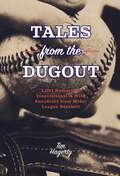
A wild bull on the field, a fly ball caught by a train conductor, a pitcher taking the mound barefoot—Minor…
League Baseball has been played across the country in cities large and small for more than a century, and there are thousands of entertaining and improbable stories to tell from it.Join professional baseball broadcaster Tim Hagerty for a journey through the zaniest Minor League stories in Tales from the Dugout. Given its long history, it is no surprise that the game has encountered some bizarre things over the years. This humorous and outlandish collection of stories is sourced from newspaper archives and the Baseball Hall of Fame Library in Cooperstown, New York, and includes a foreword by former MLB All-Star Billy Butler. Whether you're a baseball fanatic or just a fan of sports history, this book captures the spirit of the game.This compendium of minor league shenanigans includes:HOLE IN ONE: In 1942, a Milwaukee Brewers batter hit a low line drive that bounced down the right field line. He rounded the bases while confused Louisville Colonels fielders searched for the ball. They eventually found it inside a gopher hole.MONKEYING AROUND: A chimp's escape turned a Southern Association game into pandemonium on July 17, 1909. "Henry the Chimpanzee," the New Orleans Pelicans' official mascot, busted from his cage and chased players around the field. The chimp then went after fans, who ran from him screaming. The game was delayed a few minutes while Henry was restrained.HEADLESS CRUSHER: A police department in Ohio got a call about a missing head. The Lake Erie Crushers' mascot's head was stolen in 2011, forcing the mascot to miss a few home games. After learning through media reports that police were investigating, the thief returned the head by inconspicuously placing it under the ballpark's tarp.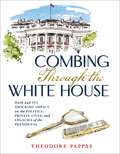
Discover a fascinating and novel look at the U.S. presidents, the first families, and American history—all through the lens of…
hair. With meticulous detail, engaging storytelling, and full-color visuals, encyclopedia editor Theodore Pappas combs through American history, teasing out long-forgotten and little-known ways that hair has influenced the presidency and the public and private lives, personal scandals, and tragedies of the men and women who have occupied the White House.Go deep into the history of such topics as:Abraham Lincoln's famously ridiculed appearance and the surprising role hair played in both his presidency and assassinationJohn F. Kennedy's connection to James Bond and how hair factored into his vast image-making and infidelitiesThe lush tradition of collecting hair as a way of honoring leaders, remembering our loved ones, and preserving their memoriesScientific hair analysis and how DNA has been used to solve long-standing presidential mysteriesThe connection of hair to the lives, loves, scandals, and tragedies that shaped presidents, first ladies, and the nation at large This unique window into the past shines entertaining new light on the decisions, relationships, and tragedies that have shaped the role of the president and the place of the U.S. in the world. Whether you're interested in presidential trivia or historical mysteries, Combing Through the White House personalizes the past through an element of life we can all relate to—hair—giving us new glimpses into our country and even ourselves.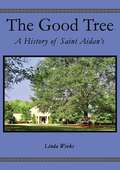
The Good Tree: A History of Saint Aidan’s
By Linda Weeks. 2020
It was a project like no other. There was an energy right from the first meeting. Not everyone knew each…
other but it didn&’t matter. No-one knew how to do this thing but that didn&’t matter either.In 1993, the Right Reverend Frank K. Allan, 8th Bishop of the Episcopal Diocese of Atlanta, was keeping an interested eye on the rapid development of a northern suburb known as Johns Creek. He began to think about the Christian souls who were settling there, putting down roots to begin a new life and raise their children in a new city. Where would they worship? How would they express their Christian faith? What could he do meet their needs?The Good Tree is the story of a group of parishioners from Saint David&’s Episcopal Church in Roswell who got together to build a mission church in nearby Alpharetta. Beginning with prayer and enthusiasm and guided by the inspirational Father Noel Burtenshaw, the founding of a new mission church was a deeply spiritual and yet very human journey for all concerned. The Good Tree describes that journey, from its unexpected beginnings, through the first twenty-five years of highs and lows, twists and turns, including the difficult period that followed the ordination of Canon Gene Robinson as Bishop of New Hampshire.If you ever wondered how a church building comes to be in a particular place at a particular time, or if you are interested in exploring the expression of Christianity in the modern world, or if you are simply interested in reading an inspiring story about a group of ordinary people with a determined Christian purpose, then you will enjoy reading The Good Tree.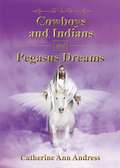
Cowboys and Indians and Pegasus Dreams
By Catherine Ann Andress. 2020
This is the story of a third generation Texas woman born in a small town in the center of the…
Texas Panhandle. Over protected and reared to be a wife and mother just as all the women in her family had been, her goal became just that, to be a wife and mother and to have a family of her own.Fate intervened, however, at every crossroad when her difficult first marriage to a rancher ended and she faced life as a single parent. After remarrying a few years later she was soon tragically widowed and, at 31, had to bury the man she loved so dearly. He was a Pathologist whose own terrible twist of fate occurred at the beginning of his medical career when, as an intern at Parkland Hospital in Dallas, he assisted with the initial postmortem exam on our late President John F. Kennedy. From that moment he was forced to live with deadly secrets which severely altered his life forever.This story focuses on the author's great struggle to believe in herself to face the world alone and the unbelievable frustration of having to again and again tolerate and rise above numerous legal entanglements, drastic financial losses and, on top of everything else, employment injustices; all this while rearing her daughter with no one by her side to believe in her. In midlife, she was brought to her knees after having a series of tragic events when she even prayed to die... this time she was led to the Great Throne of God&’s Grace.In writing this she was able to revisit and immortalize those she loved so dearly after losing precious loved ones tragically...a life impossible but for the grace of God and for scriptures such as: Proverbs 3: 5 & 6, &“Trust in the Lord with all thy heart and lean not unto thine own understanding, in all thy ways acknowledge Him and He shall direct thy paths&”; Genesis 50:20, &“But as for you, ye thought evil against me, but God meant it unto good&”; and Proverbs 16:3, &“Commit to the Lord whatever you do and He will establish your plans&”.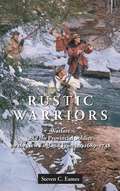
The early French Wars (1689-1748) in North America saw provincial soldiers, or British white settlers, in Massachusetts and New Hampshire…
fight against New France and her Native American allies with minimal involvement from England. Most British officers and government officials viewed the colonial soldiers as ill-disciplined, unprofessional, and incompetent: General John Forbes called them “a gathering from the scum of the worst people.” Taking issue with historians who have criticized provincial soldiers’ battlefield style, strategy, and conduct, Steven C. Eames demonstrates that what developed in early New England was in fact a unique way of war that selectively blended elements of European military strategy, frontier fighting, and native American warfare. This new form of warfare responded to and influenced the particular challenges, terrain, and demography of early New England. Drawing upon a wealth of primary materials on King William’s War, Queen Anne’s War, Dummer’s War, and King George’s War, Eames offers a bottom-up view of how war was conducted and how war was experienced in this particular period and place. Throughout Rustic Warriors, he uses early New England culture as a staging ground from which to better understand the ways in which New Englanders waged war, as well as to provide a fuller picture of the differences between provincial, French, and Native American approaches to war.